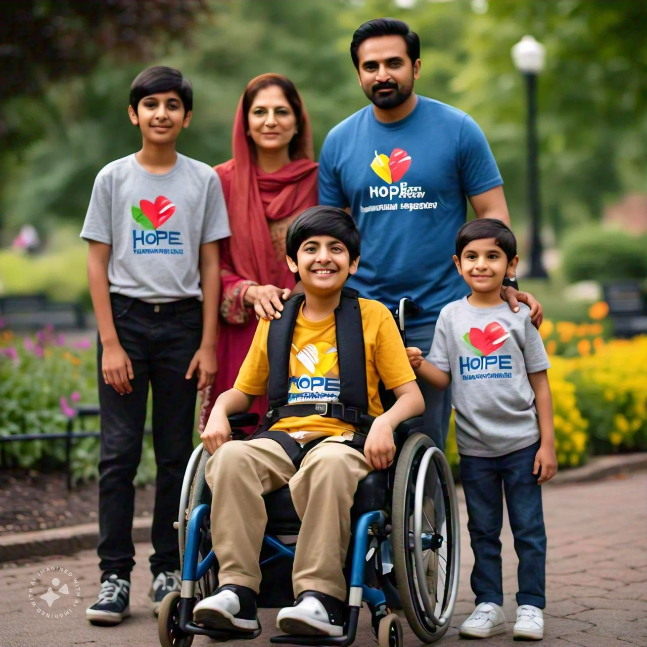Muscular Dystrophy
-
 Ghulam Ali
Ghulam Ali
| Thursday 8th of August 2024 11:24:36 AM (UTC)

Muscular dystrophy (MD) refers to a group of genetic disorders characterized by progressive muscle weakness and degeneration. These disorders vary in severity, the muscles they affect, and the age at which they begin. Below is an overview of the key types, causes, and treatments for muscular dystrophy:
### Types of Muscular Dystrophy
1. **Duchenne Muscular Dystrophy (DMD):**
- **Onset:** Early childhood, usually between ages 2 and 6.
- **Symptoms:** Rapid progression of muscle weakness, starting with the hips, thighs, and shoulders. Often leads to wheelchair dependency in adolescence.
- **Inheritance:** X-linked recessive, mostly affecting boys.
2. **Becker Muscular Dystrophy (BMD):**
- **Onset:** Later onset, usually in teens or early adulthood.
- **Symptoms:** Similar to Duchenne but milder and slower progressing.
- **Inheritance:** X-linked recessive.
3. **Myotonic Dystrophy (DM):**
- **Onset:** Varies widely, from childhood to adulthood.
- **Symptoms:** Muscle weakness, myotonia (difficulty relaxing muscles), and potential involvement of other organs such as the heart and eyes.
- **Inheritance:** Autosomal dominant.
4. **Limb-Girdle Muscular Dystrophy (LGMD):**
- **Onset:** Adolescence to adulthood.
- **Symptoms:** Weakness in the shoulder and hip muscles.
- **Inheritance:** Can be autosomal dominant or recessive, depending on the specific type.
5. **Facioscapulohumeral Muscular Dystrophy (FSHD):**
- **Onset:** Teens to early adulthood.
- **Symptoms:** Weakness in the muscles of the face, shoulders, and upper arms.
- **Inheritance:** Autosomal dominant.
6. **Congenital Muscular Dystrophy (CMD):**
- **Onset:** At birth or within the first few months.
- **Symptoms:** Generalized muscle weakness and possible joint deformities.
- **Inheritance:** Autosomal recessive.
7. **Oculopharyngeal Muscular Dystrophy (OPMD):**
- **Onset:** Middle to late adulthood.
- **Symptoms:** Weakness in the muscles of the eyes and throat, leading to drooping eyelids and difficulty swallowing.
- **Inheritance:** Autosomal dominant.
### Causes of Muscular Dystrophy
Muscular dystrophy is caused by mutations in genes that are responsible for producing proteins essential for muscle function. The specific gene mutation determines the type of muscular dystrophy and the severity of the disease.
- **Dystrophin Gene Mutations:** In DMD and BMD, mutations in the dystrophin gene result in insufficient or abnormal dystrophin protein, leading to muscle damage.
- **Other Protein Deficiencies:** Other types of MD are associated with mutations affecting different proteins, such as dysferlin (in LGMD), laminin (in CMD), or others.
### Treatment for Muscular Dystrophy
There is currently no cure for muscular dystrophy, but treatments can help manage symptoms and improve quality of life.
1. **Physical Therapy:** Helps maintain muscle function and prevent contractures.
2. **Occupational Therapy:** Assists with daily activities and adapts living spaces to increase independence.
3. **Medications:**
- **Corticosteroids (e.g., prednisone):** Used to slow muscle degeneration, particularly in DMD.
- **Eteplirsen:** An exon-skipping drug used in some cases of DMD to increase dystrophin production.
4. **Surgical Interventions:** Corrective surgery may be necessary for contractures or scoliosis.
5. **Respiratory Support:** As muscles weaken, especially in later stages, ventilatory support may be needed.
6. **Cardiac Care:** Regular monitoring and treatment of heart problems, which can occur in certain types of MD.
7. **Gene Therapy:** Research is ongoing to explore the potential of gene therapy to correct the underlying genetic mutations in MD.
### Future Directions
Research is ongoing into various treatments, including gene therapy, stem cell therapy, and new medications that could potentially slow or even reverse muscle damage in muscular dystrophy.
Living with muscular dystrophy requires comprehensive care that addresses not only physical but also emotional and social needs, often involving a multidisciplinary team of healthcare providers.
Start the conversation
Become a member of TxtTale to start commenting.
Already a member?
